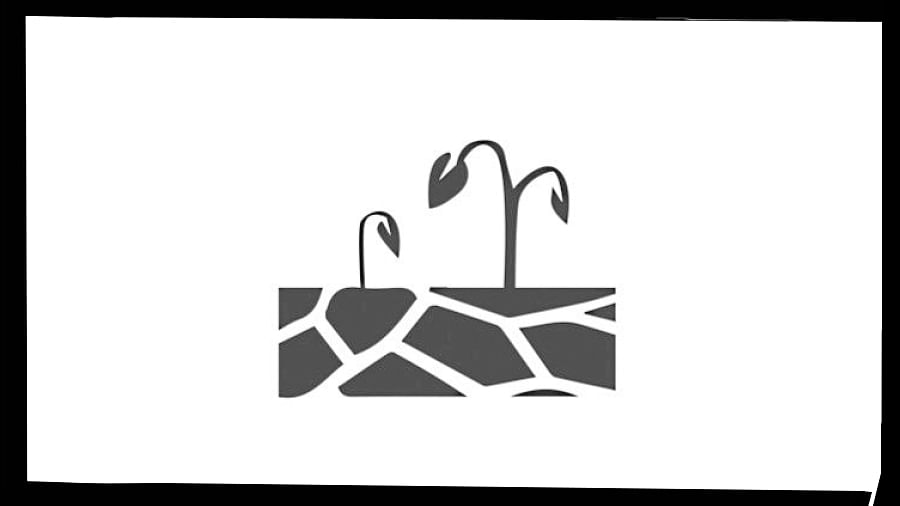
A common adage says, “You are what you eat”. In post-Green Revolution India, we must rephrase it as, “You are what you grow to eat”.
For long, concerned scientists, such as this author, have been focusing on the disastrous environmental consequences of the Green Revolution, such as global warming, soil degradation, groundwater pollution rendering water non-potable, and soil contamination with toxic residues, emanating from unbridled use of herbicides, fungicides and insecticides, leading to the widespread onset of cancer in Gurudaspur district in Punjab (called the “cradle of Indian Green Revolution”) etc.
Now emerges a more serious and insidious danger – that of some of the “miracle dwarf varieties” of rice and wheat, which carry alien genes, brought to India from CIMMYT (International Centre for Maize and Wheat Research) in Mexico, and International Rice Research Institute in Los Banos in Philippines, both under American patronage, turning out to be far less nutritious with time. Imagine an entire population eating something that has little food value and, tragically, more toxic value.
In November 2023, a dozen scientists from the Indian Council of Agricultural Research (ICAR), New Delhi, Bidhan Chandra Krishi Viswavidyalaya (a premier agricultural research institute), West Bengal, and the National Institute of Nutrition, Telangana, published a seminal investigation that showed that while the Green Revolution helped India produce a lot of food grains, primarily rice and wheat, it seriously compromised our nutritional security.
In a first, the investigation reports that breeding programmes focused merely on grain yield but resulted in altering the nutrient profiles of both crops dramatically, that their dietary significance to the Indian population vastly decreased. While chasing yield, the plant genetics have been tinkered with so much that they no longer do the fundamental job of delivering nutrition from the soil to the grains.
Between 2018 and 2020, the scientists grew ‘landmark’ high-yielding varieties of rice and wheat released since the Green Revolution was introduced in 1967. As many as 16 cultivars were chosen for rice and 18 for wheat. Around 1,500 cultivars of rice and wheat have been released for mass cultivation since the 1960s. The ‘landmark’ ones were selected after discussions with several Indian plant breeders attached to different institutes. These had been popular in India and were widely adopted.
While rice and wheat meet the energy requirements of 50 per cent of Indians, the nutrient profiles of harvested grains show loss up to 45 per cent of their food value since the start of the Green Revolution. At this rate, the grains will become unfit for human consumption by 2040.
What is most worrying is that along with diminishing nutrient content in grains, the concentration of toxic elements has increased. During the past 50 years, the concentration of essential micronutrients like zinc and iron decreased by 33 per cent and 27 per cent, respectively, in rice, and by 30 per cent and 19 per cent, respectively, in wheat. Meanwhile, the concentration of the highly toxic element arsenic showed a 1,493 per cent increase in rice grains.
Simply put, post-Green Revolution, our staple grains are not only less nutritious, but also increasingly harmful to human health, for arsenic is a carcinogen. The International Agency for Research on Cancer (IARC) has classified arsenic and arsenic compounds as carcinogenic to humans. The very adverse health impact of this shift in nutrient profiles of rice and wheat will worsen India’s growing burden of non-communicable diseases (NCDs).
Phosphorus, calcium, silicon, and vanadium are required for proper bone-formation. Zinc is needed for immunity, reproductive and neurological development, and iron is a key element in haemoglobin formation. All of these elements are depleted in today’s rice and wheat grains. And high arsenic accumulation is a serious matter. These findings corroborate a report of the Indian Council of Medical Research (ICMR) that showed a 25% increase in NCDs among Indians between 1990 and 2016. Of the two billion global population suffering from micronutrient deficiency, India now has a third. National Family Health Survey reports child stunting due to micronutrient deficiency.
Crop Wild Relatives
Contrary to common belief that soil nutrient deficiency leads to low nutrient density in grains, the current investigation proves that it is not low concentration per se in soil, but the inability of the newly released miracle dwarf varieties to sequester enough zinc and iron and translocate the same to the grains. Rice cultivars released in the 1960s contained 337 ppm calcium, 19.9 ppm zinc, and, 33.6 ppm iron, which dropped to 187 ppm, 13.4 ppm, and 24 ppm, respectively, by 2000, a drop of 45%, 33% and 30%, respectively. Rice is an intelligent plant that can screen out harmful elements from reaching grains. Over time, though, it has lost this inherent mechanism, thanks to the Green Revolution. India gained in quantity but lost in quality.
The only way to reverse the alarming situation is to turn to the utilisation of crop wild relatives, to zero in on donors rich in nutrients and utilise them in crossbreeding. I have given details of how this could be done in my 2019 book, ‘Combating Global Warming – The Role of Crop Wild Relatives for Food Security’ (Springer Nature International), which was launched by UN Secretary General Antonio Guterres during the global summit on global warming in New York in September 2019. Though the primary focus of the book was global warming, the techniques detailed are equally applicable to combating nutrient depletion in plant species. Whether the mandarins at the ICAR, Delhi, and the Government of India wake up to this remains a question.
(The writer is a former professor at the National Science Foundation, Royal Society, Belgium)